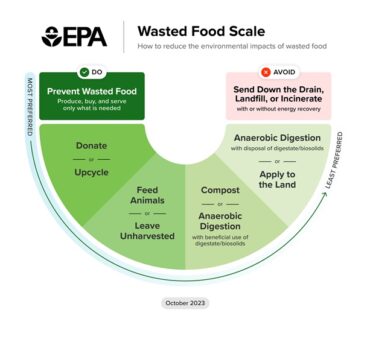Over 11 million metric tons of pet food is manufactured annually in North America alone. While commercial cat and dog food is generally safe, about 1.7% of reported pet food-related poisonings in the U.S. occur due to adulteration.
This makes cat and dog food recalls an occasional but significant concern. These recalls not only affect the health and safety of our beloved pets but also raise concerns among pet owners and result in huge losses for pet food brands.
In this article, we will focus on the dog food recall process, the common causes behind dog food recalls, and how dog food producers can manage recalled food responsibly to reduce their losses.
Key Takeaways
- A well-prepared dog food recall process involves identifying the issue, notifying relevant parties promptly, and implementing corrective actions to prevent future recalls.
- Effective recall management includes clear procedures for batch separation, cleaning, and routing to avoid contamination.
- Regular equipment maintenance and inspection are vital to avoiding recalls caused by foreign matter contamination, like metal fragments.
- Preparing a clear recall plan, promptly notifying affected parties, and implementing corrective actions are essential components of effective dog food recall management.
Dog Food Recall Process
Dog food recalls are a vital component of ensuring the safety of our canine companions.
They are initiated when there is reason to believe that a specific dog food product may pose health risks to pets.
The food recall process is classified into three main categories based on the level of potential danger:
Class I recall
This is the most critical type of recall.
It involves dog food products that have a high probability of causing severe health problems or even death in pets. These dry and wet dog food recalls are typically linked to contamination with harmful substances, such as Salmonella or Listeria.
Class II recall
These recalls pertain to dog food products that may cause temporary or medically reversible health issues. While not as severe as Class I recalls, they still indicate a significant concern regarding the product’s safety and quality.
Class III recall
This class includes dog food products that are unlikely to cause any adverse health effects.
Wet and dry dog food recalls in this category typically involve issues like packaging errors or incorrect labeling, which may not directly impact pet health but still require correction to ensure consumer safety.
Please note: For pet food producers, prompt and effective action is essential when a recall is issued. This includes swift removal of affected products from the market, clear communication with distributors and retailers, and transparent notifications to consumers.
What are the Main Dog Food Recall Causes?
Dog food and treats recalls can be attributed to various factors. Let’s delve into the most common causes of pet food recalls.
Mold and Other Toxins’ Contamination
Moldy dog food recalls are a must since contaminated food can contain highly toxic substances like mycotoxins.
Mycotoxins can lead to severe health issues in pets, including:
- Gastrointestinal problems
- Liver and kidney damage
- Immune system suppression
- Neurological symptoms
- Increased risk of cancer
Bacteria and Pathogens
Contaminated dog food can harbor harmful bacteria like Salmonella, leading to recalls.
When ingested, Salmonella can cause a range of health issues in pets, including vomiting, diarrhea, lethargy, and dehydration. Furthermore, infected pets can transmit bacteria to humans through close contact or contaminated surfaces.
This makes dog food recalls due to Salmonella contamination crucial for keeping both pets and humans safe.
Phenobarbital (Euthanasia Drug) Contamination
Phenobarbital is a class C-IV control substance used for rapid and painless euthanasia of animals.
The discovery of phenobarbital in dog food is an alarming and ethically sensitive issue. Even trace amounts of this euthanasia drug in dog food can lead to recalls due to the potential health hazards it poses to pets.
But how does this drug end up in dog food in the first place?
Phenobarbital contamination can occur when rendered euthanized animals enter the pet food supply chain.
Dogs that consume food tainted with phenobarbital can experience:
- Lethargy
- Ataxia Loss of balance
- Coma and even death
High Vitamin D Levels
Too much vitamin D in dog food can result in a condition called hypervitaminosis D, which can manifest as symptoms like:
- Vomiting
- Loss of appetite
- Increased thirst
- Weight loss in dogs
In severe cases, it can even lead to kidney damage or failure.
One notorious case of nationwide dog food recall due to excess vitamin D levels is that of Hill’s Pet Nutrition company in 2019. The U.S. Food and Drug Administration issued a warning about the expanded recall involving 85 lots of 33 canned dog food varieties.
Presence of Foreign Matter
The detection of foreign matter in dog food, such as plastic or metal fragments, is a frequent trigger for recalls.
These foreign materials not only compromise the nutritional integrity of the food but also pose a direct physical threat to pets. Ingesting foreign objects can lead to choking, digestive tract injuries, or other severe health issues in dogs.
Labeling or Packaging Issues
Mistakes in labeling or packaging present significant risks to both pets and their owners. These errors can result in the misidentification of ingredients or allergen information.
For example, a product may not accurately list all the ingredients, omitting potential allergens. Such mislabeling can have dire consequences, especially for pets with known allergies or specific dietary requirements.

Dog Food Recall Prevention
Preventing dog food recalls is a vital concern for pet food manufacturers. Implementing stringent quality control measures and adhering to industry standards can significantly reduce the risk of recalls.
Here are some key prevention strategies:
- Quality ingredients sourcing: Ensuring the use of high-quality, safe ingredients and closely monitoring suppliers can minimize contamination risks.
- Proper cooking and ongoing testing: Properly cooking pet food is essential, as it eliminates the risk of bacterial contamination. Ensuring uniform mixing and conducting post-cooking assessments can help identify and rectify potential issues.
- Label accuracy: Maintaining accurate ingredient lists and allergen warnings prevents mislabeling problems.
- Hygienic production: Clear procedures for separating batches and rigorous equipment sanitation are paramount. Strict hygiene protocols, regular inspection, cleaning, and maintenance of equipment can also reduce the risk of bacterial contamination.
- Microingredient systems: Accurate measurement and metering of vitamins, minerals, and enzymes are crucial. Automated microingredient systems eliminate errors, streamline processes, and enhance traceability, contributing to recall prevention.
- Separating chemicals: Safely storing and using pest control substances, such as insecticides and traps, is essential. Clear procedures must be in place to prevent the contamination of ingredients and processing equipment by potentially hazardous chemicals.
- Recall plans: Establishing clear recall protocols allows for swift, effective action in case of an issue. Ongoing staff training on such recall plans and the overall safety and quality standards is also essential.
By prioritizing these measures, pet food companies can reduce the likelihood of recalls, safeguarding pets’ health and preserving their reputation.
Dog Food Recall Management
In the unfortunate event of a dog food recall, a well-structured and proactive approach can significantly mitigate the impact on the company, its customers, and distributors.
Here’s a comprehensive recall management strategy tailored to the specific challenges of the pet food sector:
Recall Evaluation
- Identification of the issue: The first step in recall management is pinpointing the problem. This involves determining what aspect of dog food violates FDA regulations and poses a safety risk. For example, it could be contamination by mold or pathogens, incorrect ingredient quantities, or nutrient imbalances. Pet food manufacturers should be intimately familiar with their products and potential hazards as part of their food safety plan.
- Notification: Effective communication is paramount. As soon as a recall decision is made, all relevant parties must be promptly informed. This includes customers, suppliers, and the FDA. Establish clear protocols in your recall plan regarding who needs to be notified and how they should be informed. By doing this in advance, you can streamline the process when a recall occurs, reducing response time and minimizing damage.
- Collaboration with suppliers: Collaboration with suppliers is vital, particularly if a recall is linked to ingredients provided by them. Suppliers should be well-informed about how to contact your company and provide support during a recall. This collaborative approach can help mitigate risks and facilitate a more efficient response.
- FDA interaction: While FDA notification may not be a strict requirement, it is expected by the agency and your customers. Be aware of your FDA recall coordinator and their expectations regarding documentation and actions. Collaborate with them to ensure compliance and transparency throughout the recall process.
- Corrective and preventive actions: Following a recall, FDA will seek assurance that measures are in place to prevent a recurrence. Your company’s food safety plan and supplier approval processes should undergo a thorough re-evaluation to identify and address any vulnerabilities. Additionally, the FDA will want to ensure that the non-compliant products have been appropriately removed from circulation, emphasizing the importance of proper disposal procedures.
Dog Food Recall Costs
While essential for ensuring pet safety, dog food recalls can take a heavy toll on pet food manufacturers. These costs extend far beyond the financial realm and have significant implications for a company’s reputation.
Financial Costs
The financial costs of food recalls for your brand occur as:
- Lost revenue: A dog food recall often means pulling products from shelves, leading to immediate revenue loss. Additionally, the cost of manufacturing, shipping, and disposing of the recalled products can be substantial.
- Penalties and lawsuits: Regulatory bodies, such as the FDA, may impose fines and penalties for non-compliance. However, the financial impact can be far-reaching if the recall results in lawsuits. Pet owners may file suits seeking compensation for veterinary bills, pet injuries, or emotional distress, further draining financial resources.
- Operational expenses: Managing a recall demands significant resources. This includes investigating the issue, executing the recall plan, and implementing corrective actions. The expenses related to notifying consumers, distributors, and suppliers also add up.
Reputational Costs
Your brand can also incur reputation damage, such as:
- Loss of trust: A dog food recall can erode the trust built with customers over the years. Pet owners often consider their pets as family members, making their choice of pet food a deeply personal decision. When a recall occurs, it may lead to pet owners questioning the brand’s commitment to their pets’ well-being.
- Brand damage: Negative media coverage can tarnish a brand’s image. Social media amplifies consumer sentiment, and a recall can trigger a wave of negative publicity. How a company responds to the crisis can either mitigate or exacerbate reputational damage.
- Long-term impact: Rebuilding trust and recovering from a damaged reputation is a long-term endeavor. Consumers may remain wary of the brand even after the recall issue is resolved, impacting future sales and market share.
Conclusion
Dog food recalls, though challenging, are vital to ensure pet safety. As we’ve seen, a range of factors can trigger these recalls, highlighting the need for rigorous quality control.
In the event of a dog food recall, the stakes go beyond financial repercussions, emphasizing the importance of effective recall management.
This is where Shapiro comes into play. With our deep expertise in food waste recycling management and recall logistic, we are your trusted partner in navigating this challenging terrain. Our nationwide network of qualified partners ensures a swift and efficient recall process.
Let us help you safeguard your brand and, more importantly, the pets who depend on your products.
Dog Food Recall FAQs
If you still have questions about dog food recalls, keep on reading. We’ve got all the answers:
The largest pet food recall in history occurred in 2007 and it involved 180 pet food brands and over 180 brands of cat and dog food.
The recall was prompted by the presence of the toxic substance melamine in the food. Thousands of pets were affected, leading to widespread concern about pet food safety.
Yes, dry dog food can potentially harbor E. coli and other harmful bacteria if it becomes contaminated during production, storage, or handling. Proper manufacturing and quality control processes are essential to minimize this risk.
Pet owners should also store dry dog food in a cool, dry place and follow recommended handling instructions.
A pet food recall lawsuit refers to legal actions taken by pet owners or advocacy groups against pet food manufacturers or distributors in response to a pet food recall.
These lawsuits seek compensation for damages incurred due to contaminated or harmful pet food, such as veterinary bills or the loss of a pet. They also aim to hold manufacturers accountable for product safety.
Baily Ramsey, an accomplished marketing specialist, brings a unique blend of anthropological insight and marketing finesse to the digital landscape. Specializing in educational content creation, she creates content for various industries, with a particular interest in environmental initiatives.



